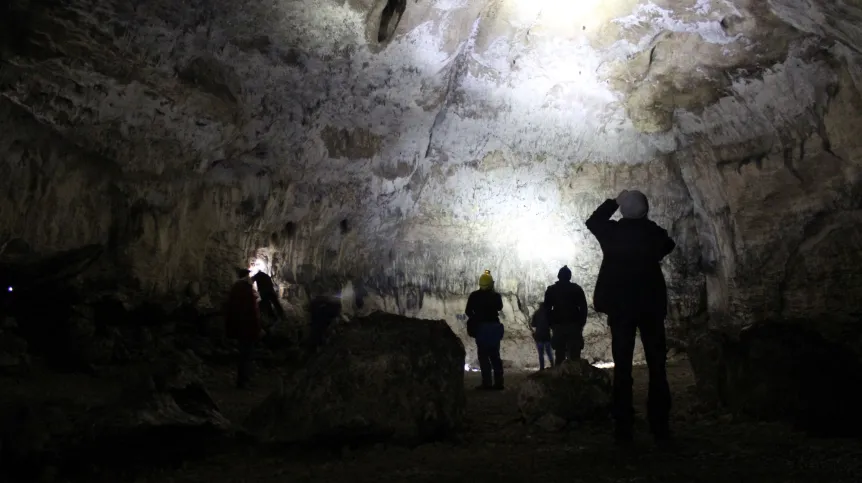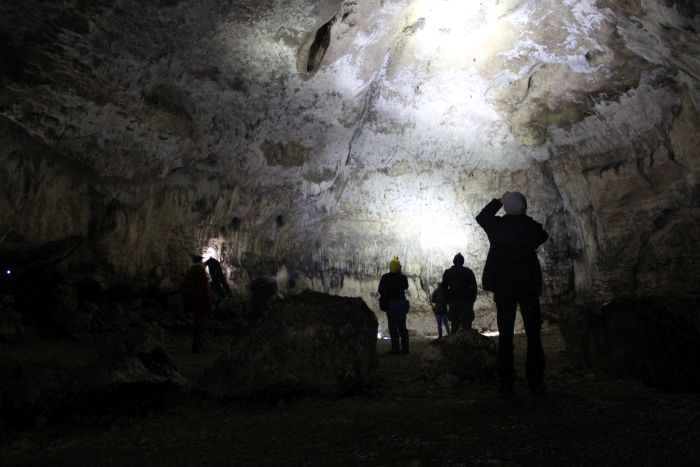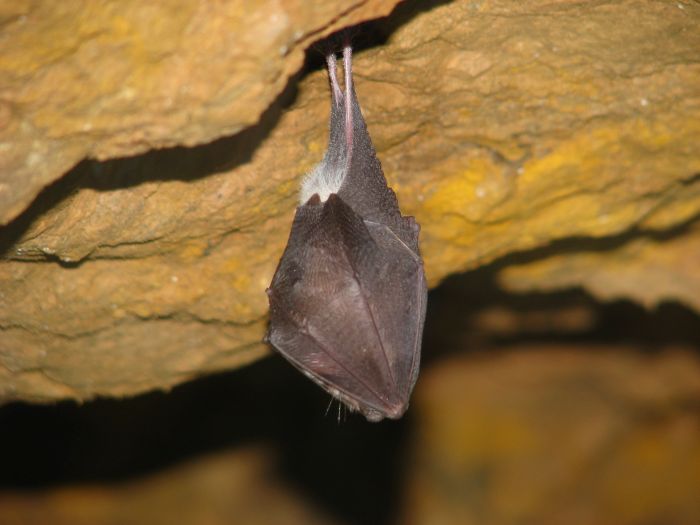
More and more bats spend winter in European caves, although 40 years ago their population was decreasing, in part due to heavy metals present in the environment. Scientists from Poznań presented the summary of 70 years of greater mouse-eared bat and lesser horseshoe bat monitoring conducted in the Ojców National Park and the surrounding area - in the following caves: Łokietka, Ciemna, Nietoperzowa, Racławicka and Wierzchowska Górna.
More and more bats spend winter in European caves, although 40 years ago their population was decreasing, in part due to heavy metals present in the environment. Scientists from Poznań presented the summary of 70 years of greater mouse-eared bat and lesser horseshoe bat monitoring conducted in the Ojców National Park and the surrounding area - in the following caves: Łokietka, Ciemna, Nietoperzowa, Racławicka and Wierzchowska Górna.
Polish scientists summarized long-term observations of greater mouse-eared bat and lesser horseshoe bat hibernating in five wintering places in the Kraków-Częstochowa Upland. Monitoring in these wintering places, conducted for 70 years, is among the longest bat monitoring projects in the world.
The researchers analysed the greater mouse-eared bat and lesser horseshoe bat population trajectories in five important wintering places located in the Ojców National Park and the surrounding area - in the following caves: Łokietka, Ciemna, Nietoperzowa, Racławicka and Wierzchowska Górna. They published their conclusions in The European Zoological Journal, the Poznań University of Life Sciences reports.
The study shows that the wintering population has increased significantly over the past 70 years. The researchers report that the population of both species was decreasing until the 1980s, and then started to grow. Similar trends were observed throughout Europe, which is why the results obtained by scientists from the Poznań University of Life Sciences and the Adam Mickiewicz University may be relevant on a continental scale, we read in the press release.

Bats are particularly susceptible to environmental changes because of their low reproductive rate, longevity, and high metabolic rates. Bat populations respond to alterations in habitat quality, climate change, as well as direct exploitation. As a result, they are excellent indicators of anthropogenic changes in the environment.
The first author of the publication, Dr. Andrzej Węgiel from the Poznań University of Life Sciences, quoted in the press release, explains that the two excellent for monitoring population trends, as they are easy to recognize and are relatively easy to count (they do not hide in crevices).
Bats were regularly counted in the first two weeks of February in 1985-2020. The publication authors also used data from scientific literature, starting from 1951. The detected number of individual bats between 1951 and 2020 was very variable. The total number of lesser horseshoe bats in the five studied caves was over 300 individuals in the early 1950s. In the 1980s and early 1990s, it did not exceed 40 individuals, and in the last decade (2011–2020), it averaged 665 individuals (max. 1050 individuals in 2020). The highest number of lesser horseshoe bats was observed in Ciemna Cave (max. 531 individuals in 2020, min. 5 individuals in 1986).

Greater mouse-eared bat was a less abundant bat species. A total of over 50 individuals were observed in the five studied caves in the 1950s. In the 1980s and early 1990s, fewer than 40 individuals were usually recorded. In the last decade of observations, there were on average 88 individuals (max. 112 individuals in 2016). Greater mouse-eared bats were the most abundant in Nietoperzowa Cave (max. 55 individuals in 2019, min. 6 individuals in 1982).
The studied caves are located between the Kraków agglomeration and the Upper Silesia industrial region with hundreds its of industrial facilities (metallurgical works, chemical and cement plants, power stations). In addition, from 1947 the Organika Azot Chemical Plant in the nearby Jaworzno manufactured DTT, which was widely used to combat pests in agriculture and forestry in Poland in 1946-1976. Many publications identify this compound as a possible cause of declining bat populations.

The researchers also searched for the causes of changes in the abundance of wintering bats.
They emphasize that in the last decades of the 20th century, this region was the most polluted in Poland and one of the most polluted in Europe. At the end of the 1980s, industrial production, including that of heavy metals, declined considerably. As a result, bats are less exposed to contamination, which is the likely cause of long-term changes in the populations of both species.
Other factors such as climate, food shortages and diseases can also affect changes in the population of bats.
PAP - Science in Poland
kol/ zan/ kap/
tr. RL













